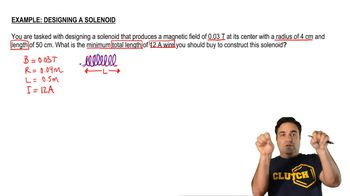(II) An electromagnetic wave has an electric field given by .
a. What are the wavelength and frequency of the wave?
b. Write down an expression for the magnetic field.
 Verified step by step guidance
Verified step by step guidance Verified video answer for a similar problem:
Verified video answer for a similar problem:



 5:22m
5:22mMaster Introduction to Electromagnetic (EM) Waves with a bite sized video explanation from Patrick
Start learning